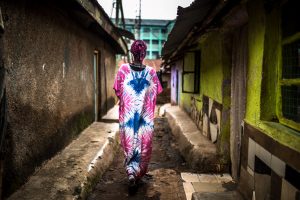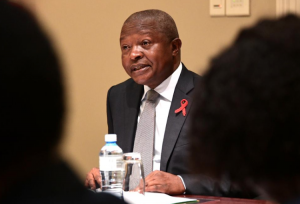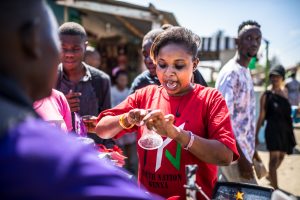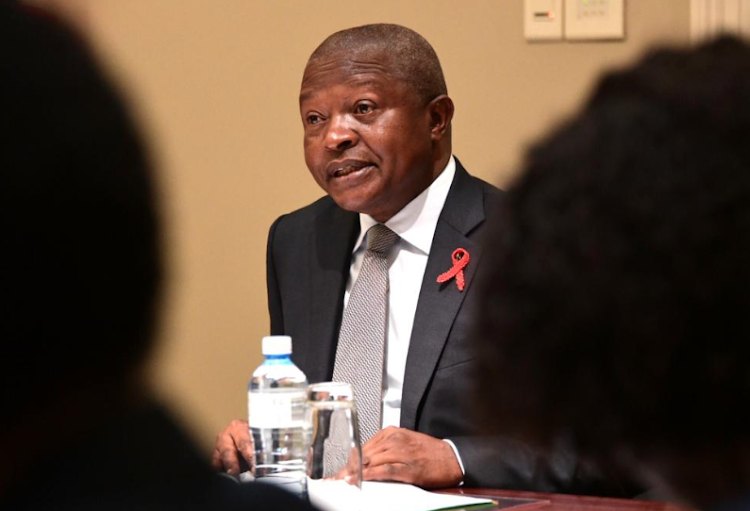If you read our blog regularly, you will know that Right By Her is a campaign run by a consortium of eight partners including DSW, who are working across Africa to improve the realities of women and girls in Africa in four key rights areas: HIV & AIDS, sexual and reproductive health, gender based violence and harmful practices.
 Having this week followed the news from the National Aids Council Inter-Ministerial Committee in Cape Town, where Deputy president David Mabuza spoke about thechallenges facing South Africa in facing HIV, we thought it was about time we posted about this important topic. HIV and AIDS continues to be a major public health issue in Africa, where there are 25.6 million people living with HIV out of the 36.7 million worldwide. The majority of these live in Eastern and Southern Africa, where there were 19.4 million people living with HIV in 2016, 59% of them adult women.
Having this week followed the news from the National Aids Council Inter-Ministerial Committee in Cape Town, where Deputy president David Mabuza spoke about thechallenges facing South Africa in facing HIV, we thought it was about time we posted about this important topic. HIV and AIDS continues to be a major public health issue in Africa, where there are 25.6 million people living with HIV out of the 36.7 million worldwide. The majority of these live in Eastern and Southern Africa, where there were 19.4 million people living with HIV in 2016, 59% of them adult women.
According to UNAIDS 2019 Global Aids Report, South Africa bears the highest burden of HIV globally. In the country there are 7.9 million people living with HIV, of whom 4.4 million are on antiretroviral treatment, so it is right that David Mabuza is looking to focus on this epidemic.
Though most people are familiar with the term HIV & AIDS, not everyone knows the difference between the two. Watch the videos below for more information or read on:
 HIV, or Human Immunodeficiency Virus, ‘targets the immune system and weakens people’s defence system against infections and some types of cancer’. It affects the CD4 cells, making the body less resistant to infections and other diseases. When the number of CD4 cells is low, a person has Acquired Immunodeficiency Syndrome (AIDS). There is no cure for HIV infection, but antiretroviral therapy (ART) has proved successful in controlling the virus and helping prevent transmission. The HIV virus is spread through certain body fluids such as blood, breast milk, semen and vaginal secretions. It is not transmitted by kissing, hugging, shaking hands or sharing personal objects, food or water. In the 1980s, HIV was seen as confined to MSM, sex workers and intravenous drug users, with few women affected by the epidemic. In 2003, a significant milestone was reached when for the first time it was reported that half of the people living with HIV were women.
HIV, or Human Immunodeficiency Virus, ‘targets the immune system and weakens people’s defence system against infections and some types of cancer’. It affects the CD4 cells, making the body less resistant to infections and other diseases. When the number of CD4 cells is low, a person has Acquired Immunodeficiency Syndrome (AIDS). There is no cure for HIV infection, but antiretroviral therapy (ART) has proved successful in controlling the virus and helping prevent transmission. The HIV virus is spread through certain body fluids such as blood, breast milk, semen and vaginal secretions. It is not transmitted by kissing, hugging, shaking hands or sharing personal objects, food or water. In the 1980s, HIV was seen as confined to MSM, sex workers and intravenous drug users, with few women affected by the epidemic. In 2003, a significant milestone was reached when for the first time it was reported that half of the people living with HIV were women.
Indeed, it is actually the case that across Africa HIV and AIDS affect women disproportionately. Young women aged 15–24 years in Sub-Saharan Africa are 2.5 times more likely to be infected than men. Prevalence rates among women in ESA range from 14.5% in East Africa to 38.7% in Lusaka (Zambia) and 39.5% in Durban, South Africa. For the continent as a whole, AIDS-related illnesses are the second leading cause of death for young women aged 15–24.

Safe Community Youth Initiative inreach.
So how can contracting HIV be avoided? In summary, using contraception such as condoms the RIGHT way every time you have sex is crucial or alternatively, avoiding sex altogether. You should also avoid sharing needles. Testing is also essential to prevention as well as treatment, care and support services. An HIV test is the only way to know whether you have HIV. At the individual level, testing and counselling is key to protect oneself and one’s partners, to access ART and to obtain care and support, as well as to reduce the risk of transmitting HIV to unborn babies.
You can use strategies such as abstinence (not having sex), limiting your number of sexual partners, never sharing needles, and using condoms the right way every time you have sex.
The good news is that there has been a positive trend in the reduction of new infections globally in the past six years. In Sub-Saharan Africa, new infections declined by 41% between 2000 and 2014. New infections tend to concentrate in specific countries in the different African regions. In ESA, a third of all new infections in 2016 were in one country: South Africa. Another 50% of new infections occurred in Kenya, Malawi, Mozambique, Tanzania, Uganda, Zambia and Zimbabwe. The hard work cannot stop yet but we are on our way! For even more information on HIV & AIDS in Africa, please check out Chapter 8 of our State of African Women report.
Please also check out our playlist on YouTube where we talk to attendees of a youth event about HIV & AIDS:

